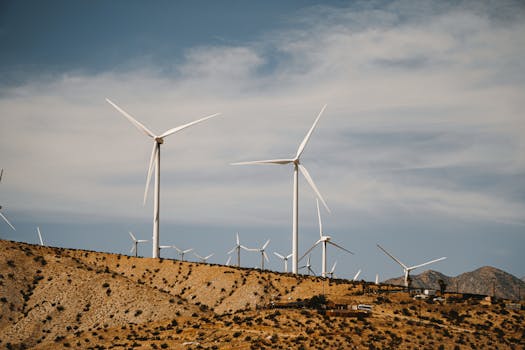
Sustainable Living: Emerging Trends for 2025
Sustainable living is becoming increasingly important as the world grapples with the challenges of climate change, pollution, and resource depletion. As we move into 2025, several emerging trends are expected to shape the way we live, work, and interact with the environment. Sustainable living is no longer just a niche concept, but a mainstream movement that is gaining momentum globally.
Section 1: Introduction to Sustainable Living

Sustainable living refers to the practice of reducing our environmental impact by making conscious choices in our daily lives. This can include simple actions like reducing energy consumption, using public transport, or buying locally sourced products. As the awareness about sustainability grows, more people are adopting eco-friendly habits and investing in sustainable technologies.
The benefits of sustainable living are numerous. Not only does it help to reduce our carbon footprint, but it also contributes to improved public health, conservation of natural resources, and enhanced economic growth. Moreover, sustainable living can also have a positive impact on our mental well-being, as it promotes a sense of community and social responsibility.
Section 2: Emerging Trends in Sustainable Living

So, what are the emerging trends in sustainable living for 2025? Some of the key trends include:
- Eco-friendly fashion: The fashion industry is one of the largest polluters in the world. However, with the rise of sustainable fashion, consumers are increasingly demanding eco-friendly clothing options made from recycled materials, organic cotton, and repurposed textiles.
- Renewable energy sources: As the world shifts away from fossil fuels, renewable energy sources like solar, wind, and hydroelectric power are becoming increasingly popular. Governments and corporations are investing heavily in renewable energy infrastructure, driving down costs and increasing efficiency.
- Sustainable agriculture: The way we produce and consume food is a significant contributor to greenhouse gas emissions. Sustainable agriculture practices like permaculture, regenerative agriculture, and vertical farming are gaining traction, as they promote soil health, biodiversity, and efficient water use.
- Zero-waste living: The zero-waste movement is all about reducing, reusing, and recycling. From composting food waste to avoiding single-use plastics, individuals and businesses are adopting zero-waste practices to minimize their environmental impact.
Section 3: Implementing Sustainable Living Practices

So, how can you implement sustainable living practices in your daily life? Here are some simple tips:
- Conduct an energy audit: Assess your energy consumption and identify areas where you can reduce your energy use. Switch to energy-efficient appliances, turn off lights and electronics when not in use, and adjust your thermostat to optimize heating and cooling.
- Use public transport or walk/bike: Leave your car behind and use public transport, walk, or bike whenever possible. This will not only reduce your carbon footprint but also improve your physical and mental health.
- Buy locally sourced products: Support local farmers and businesses by buying locally sourced products. This will help to reduce transportation emissions, promote local economies, and preserve community character.
- Reduce food waste: Plan your meals, use up leftovers, and compost food waste to reduce your environmental impact. You can also use apps like Mealime or Yummly to help you plan and shop for meals.
Section 4: Conclusion and Future Outlook

In conclusion, sustainable living is no longer a niche concept, but a mainstream movement that is shaping the way we live, work, and interact with the environment. As we move into 2025, it’s essential to stay informed about emerging trends and technologies that can help us reduce our environmental impact. By adopting sustainable living practices, we can create a better future for ourselves, our children, and the planet.
The future of sustainable living looks bright, with innovations like green buildings, sustainable transportation, and renewable energy sources becoming increasingly accessible. As consumers, we have the power to drive demand for sustainable products and services, pushing companies to adopt more environmentally friendly practices.







2 thoughts on “Sustainable Living: Emerging Trends for 2025”
Comments are closed.